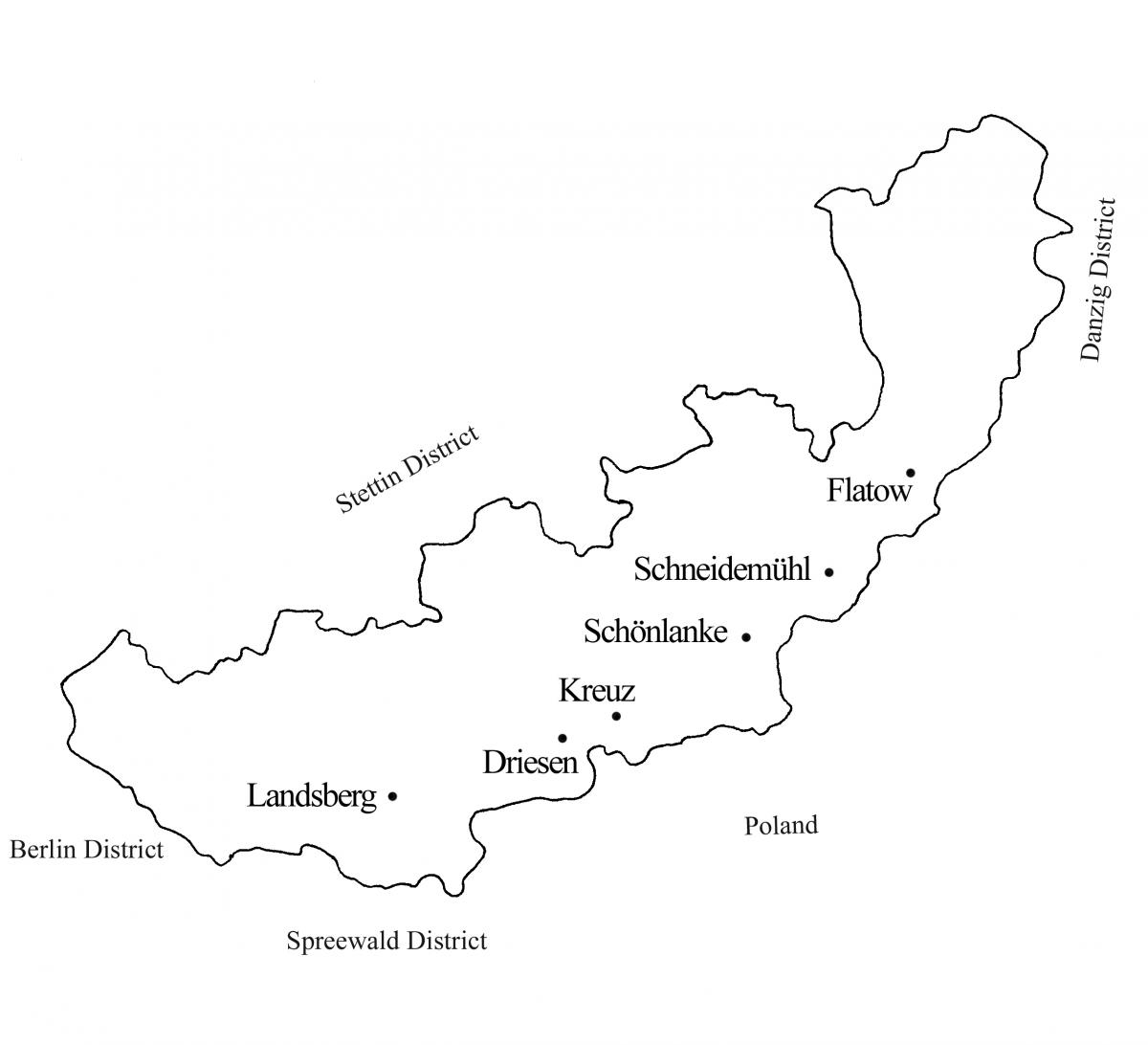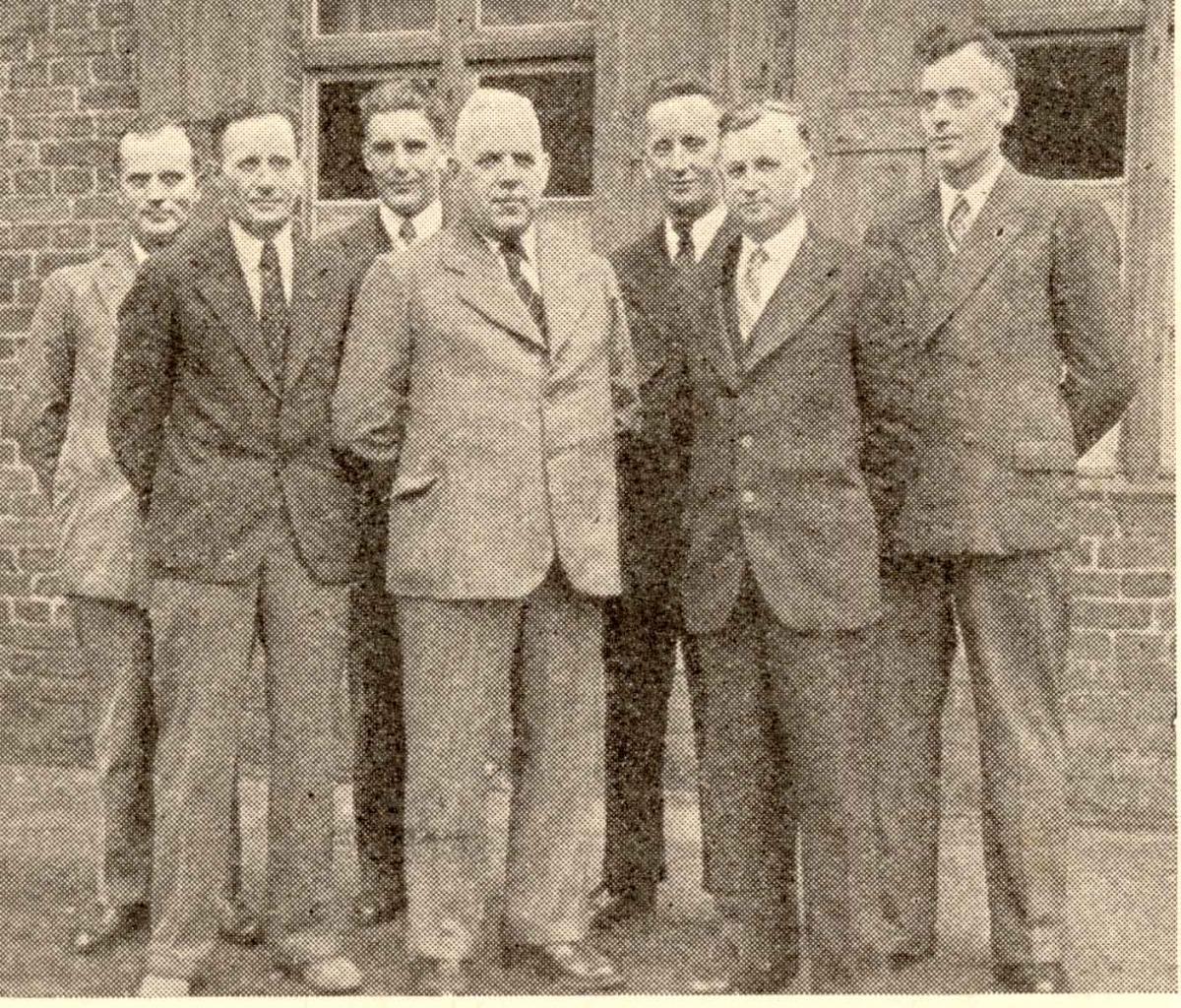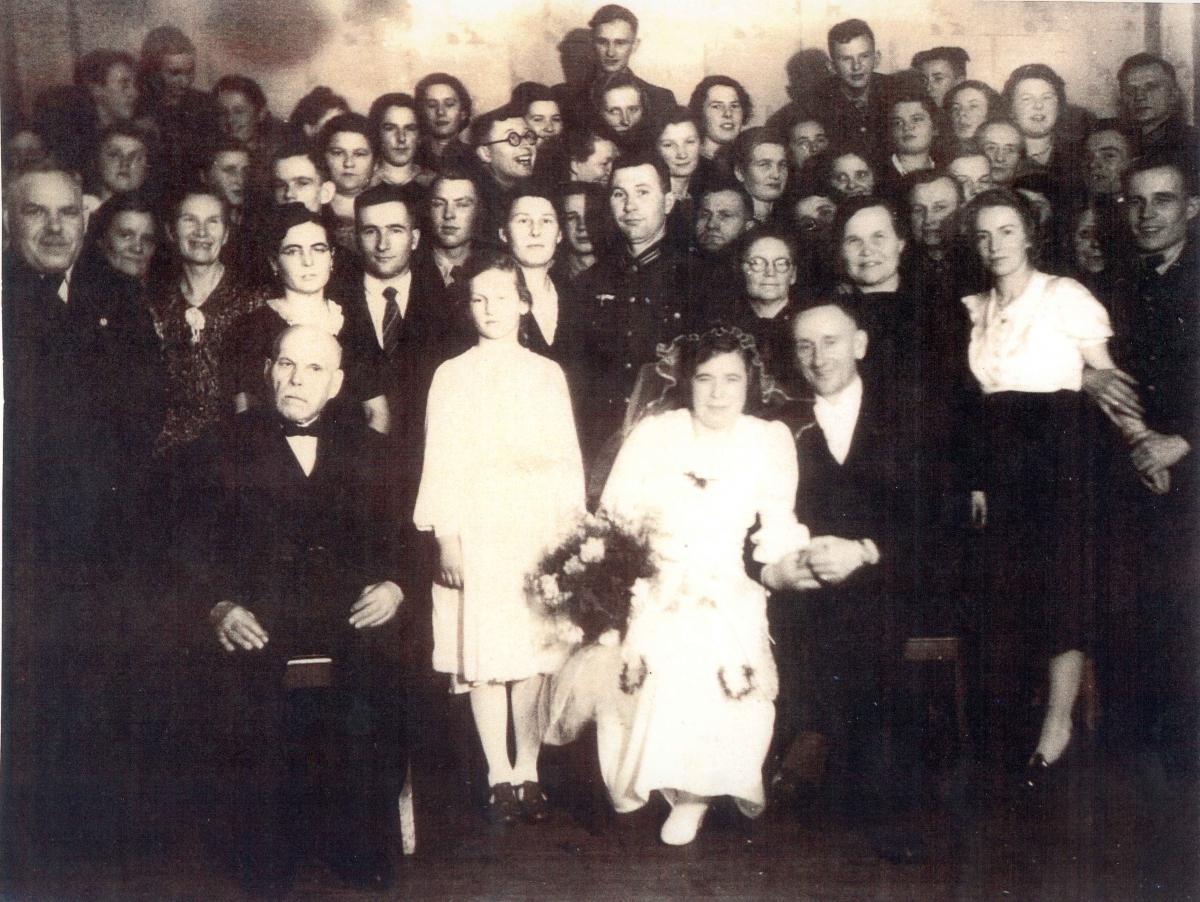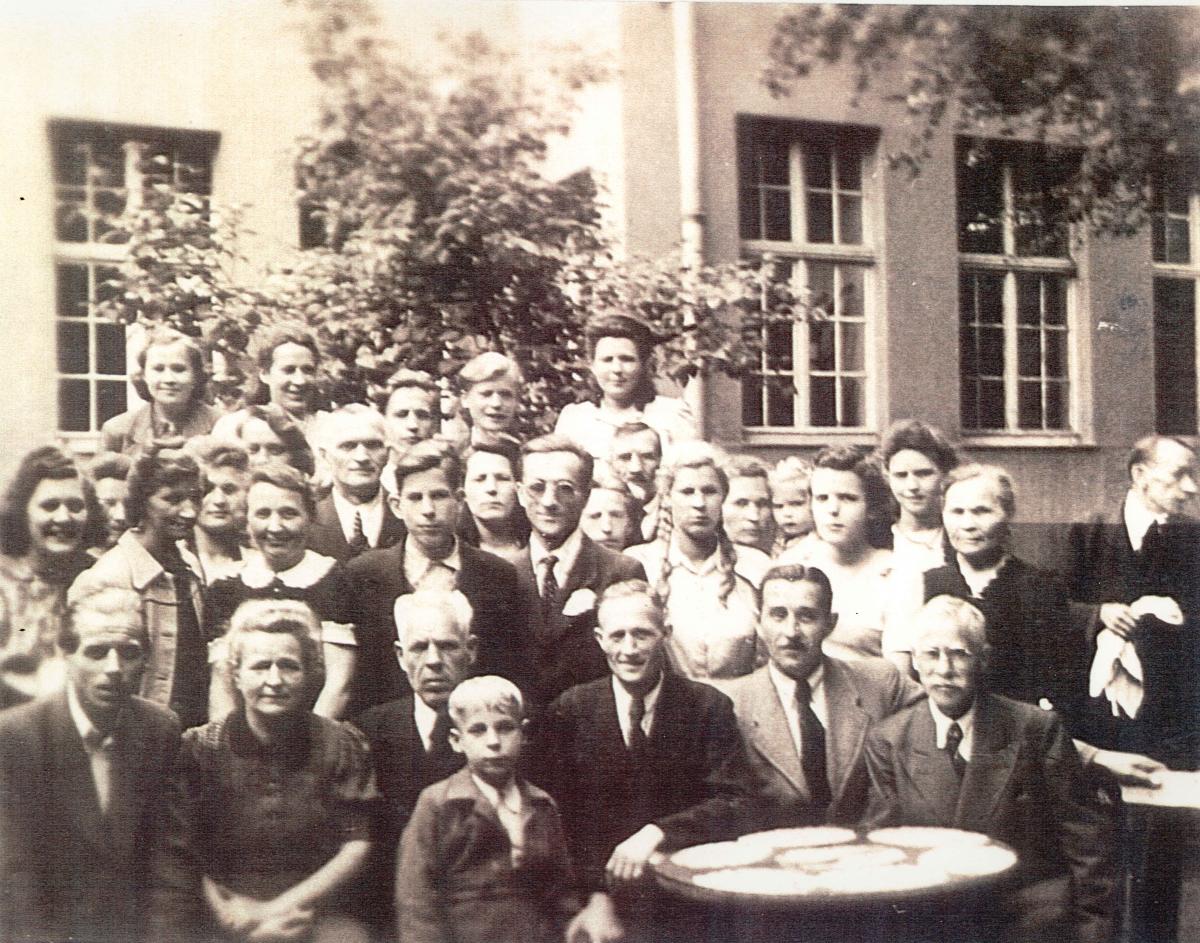Schneidemühl District
Roger P. Minert, In Harm’s Way: East German Latter-day Saints in World War II (Provo, UT: Religious Studies Center, Brigham Young University, 2009), 379-82.
| Schneidemühl District[1] | 1939 | 1940 | 1941 | 1942 |
| Elders | 21 | 21 | ||
| Priests | 8 | 11 | ||
| Teachers | 13 | 15 | ||
| Deacons | 18 | 18 | ||
| Other Adult Males | 53 | 52 | ||
| Adult Females | 134 | 138 | ||
| Male Children | 19 | 17 | ||
| Female Children | 11 | 10 | ||
| Total | 277 | 282 | 272 | 269 |
The six branches of the Schneidemühl District formed essentially a line along the Berlin-Danzig railroad. The distance from Landsberg on the Warthe River in the southwest to Flatow in the northeast is only about sixty miles.
Between those two towns were four other towns with branches of The Church of Jesus Christ of Latter-day Saints: Driesen, Kreuz, Schönlanke, and Schneidemühl.
In June 1937, Johannes Kindt (born 1897) of Schneidemühl was set apart as district president by mission president Roy A. Welker and in the presence of Elder Joseph Fielding Smith. President Kindt faithfully carried out the duties of this office until the end of the war. A photograph printed in Der Stern just prior to the war shows Brother Kindt with the six branch presidents (one of whom was an American missionary at the time).[2]
When the war began, there were just enough elders in the district to direct the programs of the Church. In fact, Johannes Kindt selected his counselors from among the serving branch presidents, asking them to also continue as the leaders of the branches. His first presidency consisted of Fritz Birth of Schneidemühl (a brother-in-law) as first counselor, Arnold Schmidt, branch president in Kreuz, as second counselor, and Wilhelm Jonischuss, branch president in Schneidemühl, as secretary.
 The Schneidemühl District in 1939
The Schneidemühl District in 1939
Mission records indicate that a conference was held in the Schneidemühl District every six months until at least the fall of 1944. Because the Red Army had already conquered the region by April 1945, no spring conference was held that year.
Johannes Kindt and Frieda Fritz Kindt were the parents of four when she died from complications of surgery on August 7, 1939—just three weeks before World War II began. In order to sustain his family and maintain his high level of Church service, he married again on January 15, 1940. His second wife was Maria Bernau, only twenty-six years of age but mature in the gospel and dedicated to service in the family and in the Church.[3]
President Kindt was employed at an army post in Schneidemühl and was therefore fortunate to live at home. According to his autobiography, he advanced to a “position of trust” and was thus a favorite of his commander, who then prevented any active duty call for him. In fact, when another officer tried to have Johannes assigned to active duty, the commander blocked the order twice. Eventually, however, the fact that he was not a member of the Nazi Party put an end to Johannes’s favored status. A third draft order came on September 23, 1943, which could not be avoided.[4] Brother Kindt retained his Church calling for the duration of the war.
 Johannes Kindt (third from right) with the presidents of the branches of the Schneidemühl District (Der Stern, 1938)
Johannes Kindt (third from right) with the presidents of the branches of the Schneidemühl District (Der Stern, 1938)
By the spring of 1944, Johannes had made two military journeys of four weeks’ duration each. The first took him through Poland, Austria, and Yugoslavia to Serbia. “Following many losses and adventures,” he later wrote, he was transferred back to Schneidemühl. In March 1944, he was pleased to have both soldier sons at home for three full weeks—Hans from the Eastern Front and Walter from France. He was also back at work with all possible energy, visiting the branches in the district. “Little by little, I was dedicating more time and effort to my Church calling than to my personal affairs,” he wrote.[5]
In August 1944, President Kindt was sent to the town of Schönau near Neustettin in Pomerania, where he was assigned as a guard at a POW camp. During the autumn, he was given leave for a month and was visited by his wife on two weekends. By January, his guard duty assignment was moved to Deutsch Krone, just fifteen miles from home.
During the war, the Flatow Branch was discontinued. President Kindt did not explain this development in his autobiography, but the lack of priesthood leadership was likely the cause. By the end of the war, the following men were serving the five remaining branches as presidents: Wilhelm Jonischuss (Schneidemühl), Karl Beyer (Schönlanke), Arnold Schmidt (Kreuz), Walter Jeske (Driesen), and Fritz Fleischhauer (Landsberg).[6]
 Johannes Kindt took Maria Bernau as his second wife on January 15, 1940. (W. Kindt)
Johannes Kindt took Maria Bernau as his second wife on January 15, 1940. (W. Kindt)
As guards, Johannes Kindt and his comrades moved their prisoners ever westward, trying to avoid the advancing Red Army. By the end of April 1945, the American army (advancing from the west) found them and disarmed the German soldiers, who a few days later were turned over to the Soviets. Then as prisoners they began their journey eastward, nearly to East Prussia. Because he was seriously ill most of the way, Brother Kindt was put in the worst physical condition category and was to be released early. In his recollection, there was a scheme in the life of the POWs: “On even days we pealed [sic] potatoes, on odd days we were deloused.”[7]
On September 9, 1945, Brother Kindt and other prisoners who were unfit for hard labor were set free. “They gave us food for about ten days, lectured us one last time, then threatened to lock us back up again if they could still see us fifteen minutes later.” The 380 men hurried westward. Ten days later, Johannes Kindt located his wife and their children in an apartment in Tremsbüttel near Hamburg. As it turned out, he was the last of the family to make it to the west in safety. Within days, the children from his first wife visited him in Tremsbüttel.[8]
 Survivors of the branches of the Schneidemühl District gathered for this photograph during a district conference in Dresden in July 1946. (W. Kindt)
Survivors of the branches of the Schneidemühl District gathered for this photograph during a district conference in Dresden in July 1946. (W. Kindt)
Because the entire territory of the Schneidemühl District was ceded to Poland following World War II, no German members of the Church living in that region were allowed to stay. The branches of the Schneidemühl District ceased to exist by the fall of 1946.
Notes
[1] Presiding Bishopric, “Financial, Statistical, and Historical Reports of Wards, Stakes, and Missions, 1884–1955,” CR 4 12, 257.
[2] Johannes Kindt, My Book of Remembrance: My Life, Works, and Mission in the Family and the Church (unpublished autobiography, 1948); private collection.
[3] Ibid., 23.
[4] Ibid., 28.
[5] Ibid., 30.
[6] Ibid., 35.
[7] Ibid., 37.
[8] Ibid., 38.
